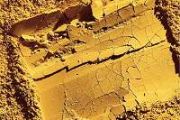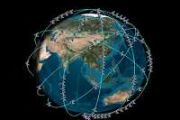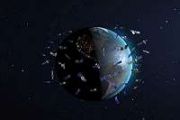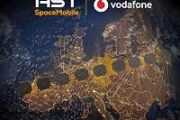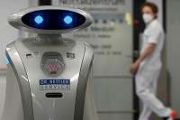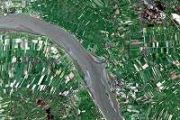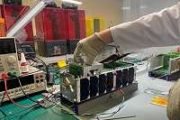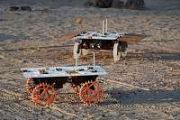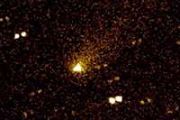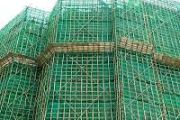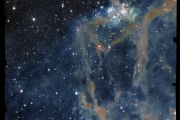
Copernical Team
Week in images: 12-16 May 2025
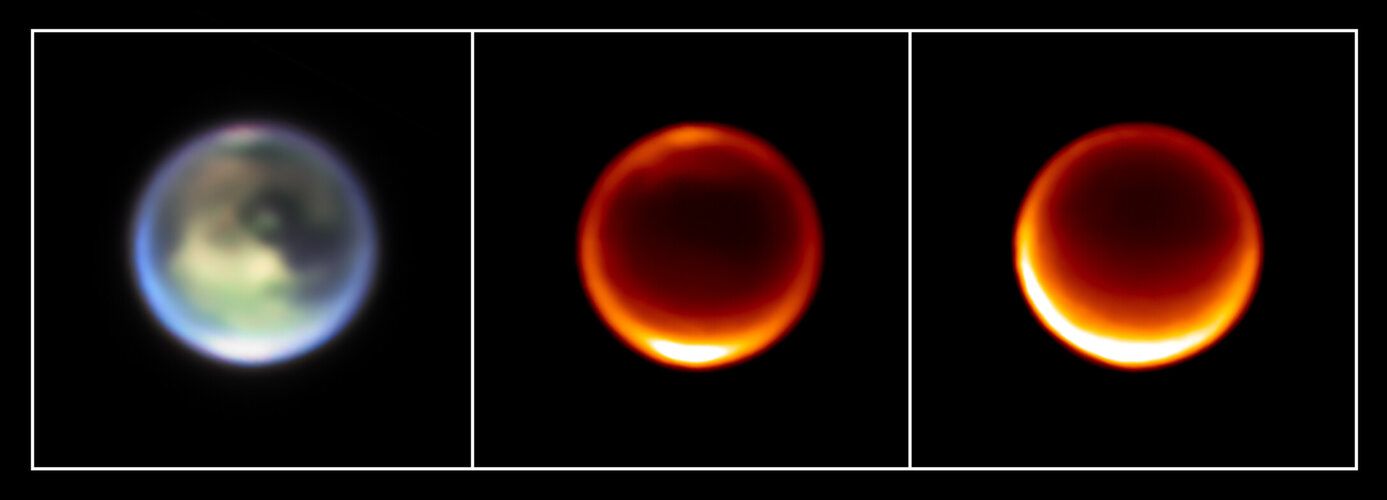
Week in images: 12-16 May 2025
Discover our week through the lens
SpaceX sends up more Starlink satellites
 SpaceX on Wednesday launched more than two dozen Starlink satellites into low-Earth orbit in the company's continuing quest to expand global Internet access.
The liftoff took place at about 12:38 p.m. local time at Space Launch Complex 40 at Cape Canaveral Space Force Station in Florida.
A Falcon 9 rocket lifted up 28 Starlink satellites in what was the first-stage booster's four
SpaceX on Wednesday launched more than two dozen Starlink satellites into low-Earth orbit in the company's continuing quest to expand global Internet access.
The liftoff took place at about 12:38 p.m. local time at Space Launch Complex 40 at Cape Canaveral Space Force Station in Florida.
A Falcon 9 rocket lifted up 28 Starlink satellites in what was the first-stage booster's four Intelsat and Cubic3 Advance Vehicle Connectivity with Successful Satellite Integration Test
 Intelsat and Cubic3 have announced the successful completion of a critical satellite connectivity test for vehicles, marking a significant step in their efforts to deliver seamless, global vehicle connectivity. The test validated the integration of Intelsat's satellite systems with Cubic3's software platform, demonstrating how terrestrial and non-terrestrial networks can work together to provide
Intelsat and Cubic3 have announced the successful completion of a critical satellite connectivity test for vehicles, marking a significant step in their efforts to deliver seamless, global vehicle connectivity. The test validated the integration of Intelsat's satellite systems with Cubic3's software platform, demonstrating how terrestrial and non-terrestrial networks can work together to provide SES to Provide Advanced Hybrid Space Network for U.S. Defense Communications
 SES Space and Defense, a subsidiary of SES, has been selected to support the Defense Innovation Unit's (DIU) Hybrid Space Architecture Network initiative. The company's Hybrid Space Architecture II project aims to demonstrate a fully integrated, multi-orbit network designed to connect commercial and government systems, providing assured, cost-effective, low-latency communications across a scalab
SES Space and Defense, a subsidiary of SES, has been selected to support the Defense Innovation Unit's (DIU) Hybrid Space Architecture Network initiative. The company's Hybrid Space Architecture II project aims to demonstrate a fully integrated, multi-orbit network designed to connect commercial and government systems, providing assured, cost-effective, low-latency communications across a scalab Ramon.Space Secures Eutelsat OneWeb Contract for Advanced Digital Channelizers
 Ramon.Space has secured a contract from Eutelsat to provide onboard digital communication channelizers for the expansion of its OneWeb Low Earth Orbit (LEO) satellite constellation. This significant agreement follows years of collaboration between the two companies and represents a key milestone in the modernization of the OneWeb satellite network.
Under this contract, Ramon.Space will del
Ramon.Space has secured a contract from Eutelsat to provide onboard digital communication channelizers for the expansion of its OneWeb Low Earth Orbit (LEO) satellite constellation. This significant agreement follows years of collaboration between the two companies and represents a key milestone in the modernization of the OneWeb satellite network.
Under this contract, Ramon.Space will del Dark Matter Origin Linked to High-Energy Particle Collisions in Early Universe
 A new theory from Dartmouth College researchers suggests that dark matter, the elusive substance making up most of the universe's mass, may have originated from the rapid transformation of fast-moving, nearly massless particles in the early universe.
Published in Physical Review Letters, the study posits that dark matter formed when these particles, initially moving at relativistic speeds,
A new theory from Dartmouth College researchers suggests that dark matter, the elusive substance making up most of the universe's mass, may have originated from the rapid transformation of fast-moving, nearly massless particles in the early universe.
Published in Physical Review Letters, the study posits that dark matter formed when these particles, initially moving at relativistic speeds, BlackSky Secures Early Access Agreements for Gen-3 Satellite Services with Global Defense Customers
 BlackSky Technology Inc. (NYSE: BKSY) has signed early access agreements for its Gen-3 satellite services with multiple international defense sector clients, offering real-time, high-resolution satellite imagery for enhanced situational awareness. These customers will gain access to ultra-detailed, 35-centimeter imagery, enabling rapid intelligence assessments and a broader range of mission-crit
BlackSky Technology Inc. (NYSE: BKSY) has signed early access agreements for its Gen-3 satellite services with multiple international defense sector clients, offering real-time, high-resolution satellite imagery for enhanced situational awareness. These customers will gain access to ultra-detailed, 35-centimeter imagery, enabling rapid intelligence assessments and a broader range of mission-crit New Study Reveals Record-Breaking Solar Storm from 12,350 BC
 Scientists have identified the most intense solar particle storm ever detected, dating back to 12,350 BC, significantly revising our understanding of ancient space weather and radiocarbon dating. This groundbreaking discovery was made possible through the SOCOL:14C-Ex model, developed by researchers at the University of Oulu in Finland, designed to analyze extreme solar storms under ancient glac
Scientists have identified the most intense solar particle storm ever detected, dating back to 12,350 BC, significantly revising our understanding of ancient space weather and radiocarbon dating. This groundbreaking discovery was made possible through the SOCOL:14C-Ex model, developed by researchers at the University of Oulu in Finland, designed to analyze extreme solar storms under ancient glac China completes testing of powerful reusable liquid rocket engine
 China has successfully completed full-scale testing of a 140-tonne liquid oxygen-methane rocket engine, a critical component for the nation's reusable carrier rockets, according to its developer, the China Aerospace Science and Technology Corporation's Academy of Aerospace Propulsion Technology. The engine, boasting the highest thrust among China's current open-cycle liquid oxygen-methane models
China has successfully completed full-scale testing of a 140-tonne liquid oxygen-methane rocket engine, a critical component for the nation's reusable carrier rockets, according to its developer, the China Aerospace Science and Technology Corporation's Academy of Aerospace Propulsion Technology. The engine, boasting the highest thrust among China's current open-cycle liquid oxygen-methane models NASA's Voyager 1 Revives Backup Thrusters Before Command Pause
 The mission team wanted to fix the thrusters, deemed unusable decades ago, before the radio antenna that sends commands to the probe went offline for upgrades.
Engineers at NASA's Jet Propulsion Laboratory in Southern California have revived a set of thrusters aboard the Voyager 1 spacecraft that had been considered inoperable since 2004. Fixing the thrusters required creativity and risk,
The mission team wanted to fix the thrusters, deemed unusable decades ago, before the radio antenna that sends commands to the probe went offline for upgrades.
Engineers at NASA's Jet Propulsion Laboratory in Southern California have revived a set of thrusters aboard the Voyager 1 spacecraft that had been considered inoperable since 2004. Fixing the thrusters required creativity and risk, 
